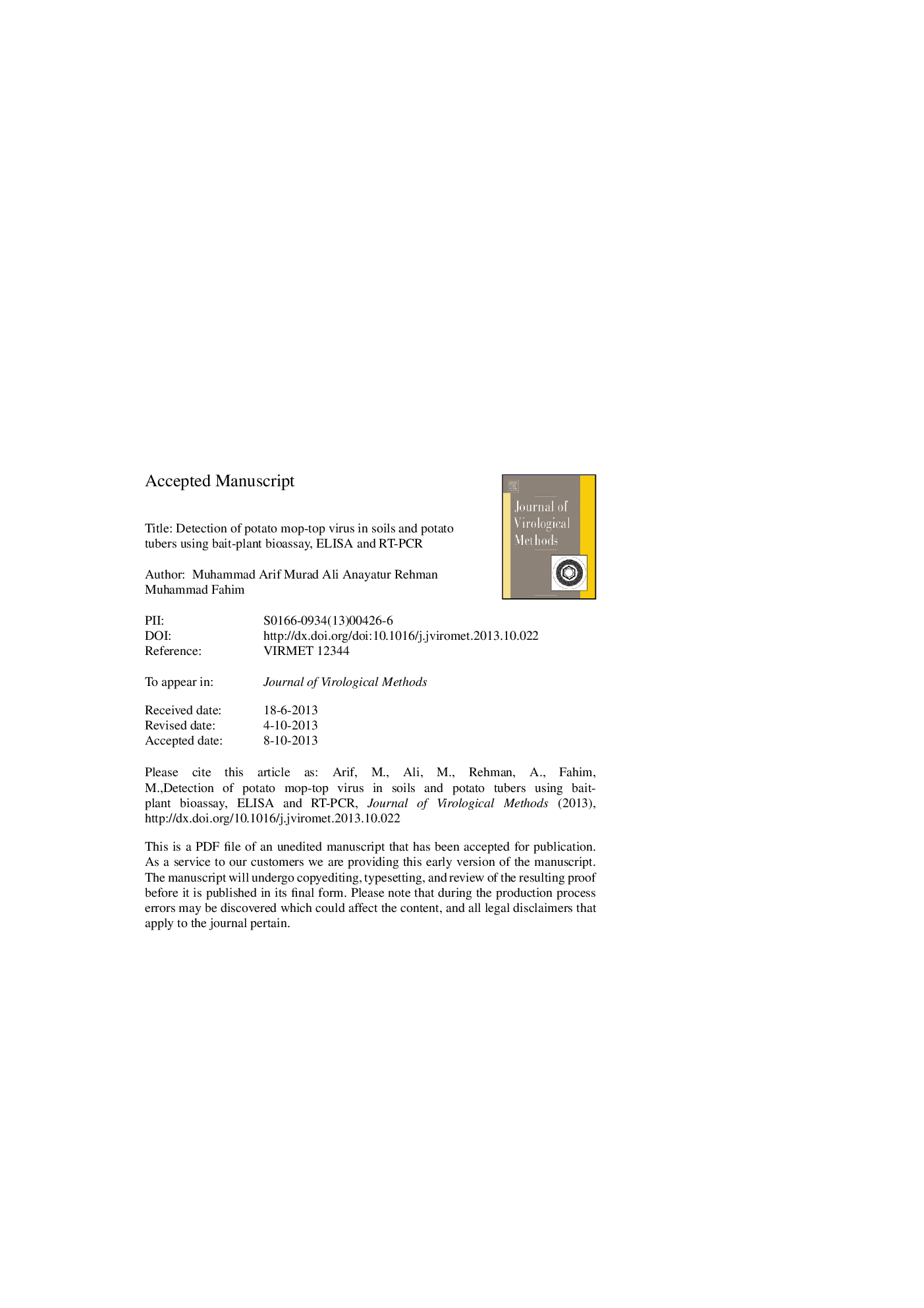| Article ID | Journal | Published Year | Pages | File Type |
|---|---|---|---|---|
| 6133947 | Journal of Virological Methods | 2014 | 22 Pages |
Abstract
The hilly region of Northwest of Pakistan is leading seed potato producing areas of the country. Soil and plant samples were collected from the region and tested for PMTV using both conventional and molecular techniques. The bait plants exhibited PMTV-characteristic v-shaped yellow leaf markings in Nicotiana debneyi plants grown in putative viruliferious soils from 20/26 locations. The results were confirmed by back inoculation of sap from both roots and leaves of bait plant on indicator hosts (N. debneyi, Nicotiana benthamiana). The root samples of bait plants grown in soils of 25 locations and leaves of 24 locations reproduced systemic infection on indicator hosts upon back inoculation. The virus was identified in bait plants grown in soils from 25/26 locations using double antibody sandwich-enzyme linked immunosorbent assay (DAS)-ELISA and reverse transcription and polymerase chain reaction (RT-PCR) methods. The products of the 566Â bp were amplified from coat protein region of PMTV RNA 3 in both root and leaf samples of baited plants. The virus was detected in 10 potato cultivars commercially grown in the region using DAS-ELISA and RT-PCR. The virus was also detected in zoospores of Spongospora subterranea derived from the peels of selected scabby tubers using triple antibody sandwich (TAS)-ELISA. The results indicate that a bait plant bioassay, infectivity assay, ELISA and RT-PCR can detect PMTV in roots and leaves of baited plants, field samples, zoospores of S. subterranea and tubers of 10 potato cultivars commercially grown in the region.
Related Topics
Life Sciences
Immunology and Microbiology
Virology
Authors
Muhammad Arif, Murad Ali, Anayatur Rehman, Muhammad Fahim,
